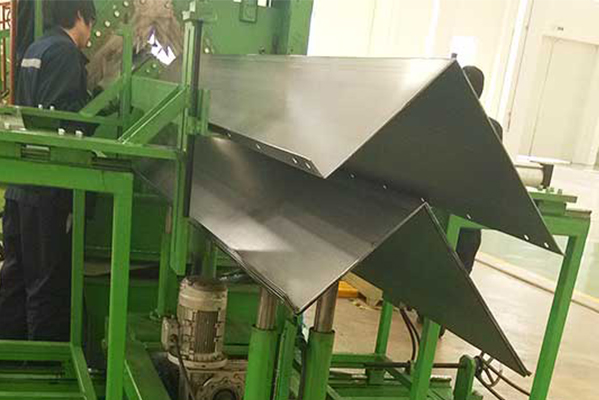Navigation Menu
Contact Us
- Email:
- info@wxavatar.com
- Address:
- Yurong Village, Yuqi Street, Huishan District, Wuxi, China.
Release Date:Mar 25, 2025 Visit:52 Source:Roll Forming Machine Factory
Steel silos have become essential storage solutions for various industries, including agriculture, mining, and manufacturing. These cylindrical structures require specialized equipment for efficient production, and that's where steel silo roll forming machines come into play. This article explores the fundamentals, working principles, components, advantages, and applications of these specialized machines.
Definition of a Steel Silo Roll Forming Machine
A steel silo roll forming machine is a specialized piece of industrial equipment designed to manufacture the curved panels that form the walls of steel silos. These machines continuously bend and shape flat metal coils into precise, curved segments that can be assembled into complete silo structures.

Working Principle
The machine operates on the roll forming principle:
1.Uncoiling: A metal coil (typically steel) is loaded and gradually straightened
2.Progressive forming: The metal strip passes through a series of roller dies
3.Curvature formation: Each set of rollers incrementally bends the metal to achieve the desired curvature
4.Cutting: The continuous curved panel is cut to specified lengths
5.Output: The formed panels are ready for silo assembly
Key Components
1.Decoiler: Holds and feeds the metal coil into the machine
2.Leveling unit: Ensures flatness of the metal before forming
3.Roll forming stations: Series of roller dies that gradually shape the metal
4.Curvature control system: Adjusts the panel's radius
5.Cutting system: Precision cutting mechanism (usually hydraulic or pneumatic)
6.Control panel: Computerized interface for machine operation
7.Support frame: Robust structure to maintain machine stability
Technical Specifications
Material thickness capacity: 0.8mm to 6mm
Panel width range: 300mm to 1500mm
Curvature radius: Adjustable according to silo diameter requirements
Production speed: 5-25 meters per minute
Power requirements: Typically 15-50 kW depending on size
Types of Steel Silo Roll Forming Machines
1.Stationary type: Fixed machines for factory production
2.Mobile type: Portable units for on-site silo construction
3.Automatic vs semi-automatic: Varying levels of automation
4.Single-curvature vs double-curvature: For different silo designs
Advantages
1.High efficiency: Continuous production process
2.Precision manufacturing: Consistent panel dimensions
3.Material savings: Minimal waste compared to other methods
4.Versatility: Can produce panels for various silo diameters
5.Labor reduction: Automated operation requires fewer workers
6.Quality consistency: Uniform product quality
Applications
Steel silo roll forming machines produce panels for:
Grain storage silos
Cement silos
Fly ash storage systems
Food processing storage
Chemical material storage
Mining material storage
Selection Considerations
When choosing a steel silo roll forming machine, consider:
1.Required production capacity
2.Material specifications (type and thickness of steel)
3.Desired silo diameters
4.Available factory space
5.Automation requirements
6.Budget constraints
7.After-sales support availability

Maintenance Requirements
Proper maintenance ensures longevity and performance:
Regular lubrication of rollers and moving parts
Inspection and replacement of worn dies
Cleaning of debris and metal particles
Calibration of cutting systems
Electrical system checks
Future Developments
The industry is moving toward:
Increased automation with IoT integration
Improved energy efficiency
Quick-change systems for different profiles
Enhanced precision through advanced sensors
Hybrid machines combining forming and assembly
Conclusion
Steel silo roll forming machines represent a specialized segment of metal forming technology that has revolutionized silo construction. By enabling efficient, precise, and cost-effective production of curved silo panels, these machines have become indispensable in modern storage solution manufacturing. As technology advances, we can expect even more sophisticated versions that further improve productivity and expand application possibilities in various industrial sectors.